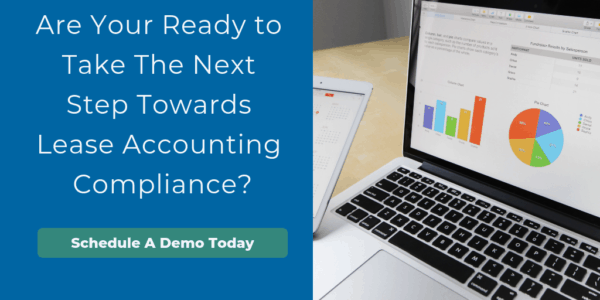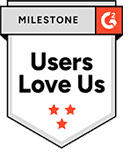
Until recently, many companies were not paying much attention to their property and asset leases beyond paying the bills. Leases were simply considered a cost of doing business, and managing lease terms and obligations was not a priority.
With the establishment of new lease accounting standards that take effect for private companies in 2021, and took effect for public companies in 2019, that mindset is changing fast. Lease management has now become an essential practice that impacts financial reporting and the bottom line.
What is lease management?
In a corporate or non-profit organization, lease management, or lease administration, means tracking and optimizing every aspect of your lease portfolio. Properly tracking leases (not only real estate but also technology, vehicles, and even assets you control as part of service agreements) can help you significantly reduce the expenses associated with leasing. We’re not talking about small changes here, but a chance to add millions to your bottom line.
Understanding lease management tasks
Lease management requires a coordinated effort between the various teams to perform a variety of tasks:
- Lease negotiation and decision making: including lease structure, lease length, and lease-vs-buy options
- Lease tracking tasks: includes tasks such as keeping track of upcoming renewals and exercising options, managing operating expenses, and updating lease data
- Lease accounting tasks: including payment of lease-related charges, recording journal entries, calculating asset and liability figures, generating reports, and performing remeasurement when leases change
Step-by-step breakdown of the lease management process
The lease management process flow covers from initial planning through lease execution, administration, and termination or renewal. Each phase plays a critical role in ensuring operational efficiency, financial accuracy, and compliance with lease accounting standards such as ASC 842, IFRS 16, and GASB 87.
Lease management process flow:
Pre-Lease activities
- Market Research: Identify suitable properties that align with business needs and financial parameters.
- Tenant Screening (for landlords): Evaluate potential tenants’ financial stability and leasing history.
- Lease Drafting: Outline key terms and responsibilities in a lease agreement, preparing it for legal review and execution.
Lease execution
- Contract Signing: Landlords and tenants formally execute the lease.
- Legal Review: Verify compliance with internal policies and external regulations.
- Security Deposit Collection: Ensure financial commitments are secured before occupancy begins.
Lease administration and tracking
- Centralized Lease Data: Organize lease details in a lease management system for transparency and easy access.
- Rent and Expense Tracking: Automate and monitor payments, ensuring alignment with contractual obligations.
- Critical Date Management: Track renewals, expirations, and option deadlines to avoid missed opportunities or penalties.
Lease Accounting and Compliance
- Expense Management and Invoicing: Allocate costs accurately and generate documentation for audits.
- Regulatory Compliance: Maintain alignment with ASC 842, IFRS 16, and GASB 87 through built-in compliance tools.
- Audit Preparedness: Conduct periodic reviews and maintain an audit trail of all lease activities.
Lease Expiry, Renewal, or Termination
- End-of-Term Management: Prepare properties for handover or renewal by tracking timelines and obligations.
- Renewal Negotiations: Use lease performance insights to inform discussions and optimize outcomes.
- New Lease Planning: Begin sourcing and evaluating new properties to meet upcoming needs.
How can you optimize your lease management process?
Optimizing your lease management process starts with building a solid operational foundation. That means centralizing lease data, standardizing workflows, and leveraging automation through purpose-built lease management software. A structured approach allows organizations to reduce risk, improve collaboration across departments, and maintain full compliance with lease accounting standards.
Step 1: Centralize lease data and management tools
For teams to work together on lease tracking, the first step is to gather all lease data in a central repository that creates a single source of truth as well as an audit trail for all lease decisions and changes.
To set your teams up for effective lease management process flow, choose a lease management software platform (like Visual Lease) that allows you to centralize ALL data related to lease contracts and provides tools for automating lease tracking tasks and auditing expenses.
When everyone managing leased assets is using the same system to update lease data, schedule payments, and create accounting journal entries, everyone is always working with the most current data. And you eliminate data integrity problems that can occur when data is moved between systems.
Step 2: Develop leasing policies
With centralized tracking tools and technology in place, you can now analyze your lease data and find out which leases are working well and which are costing you more money than you realized. Use those insights to determine how you want to standardize leasing decisions across the organization.
Best practice is for financial leaders to work with lease negotiators, administrators, and accountants to understand current practices and to establish cost-effective policies for leasing.
Step 3: Create lease requisition and update processes
To ensure your accounting team always has accurate lease information to feed balance sheets and financial reports, it’s essential to establish standard practices for every group that’s involved in acquiring and maintaining leases, including processing new leases, documenting lease changes, and handling lease terminations.
Step 4: Set up controls
Adding leases to the balance sheet has increased the complexity of financial reporting. That means more oversight is needed to ensure accounting accuracy. Also, internal monitoring and process validation are required to ensure your policies and procedures are being followed and are driving better decisions and reduced expenses.
Your lease management software can aid that process in several important ways:
- Documenting the terms of every lease, calculating every payment, and alerting you if payments don’t match the lease terms
- Providing audit tools to find overpayments, late fees, and payments that shouldn’t have been made at all
- Allowing you to customize approvals required for lease administration and lease accounting tasks
- Providing an audit trail for all lease changes
To get there, it’s critical to understand current market conditions, clearly define team responsibilities, and ensure consistent, accurate data capture across all lease-related activities. From tracking payments to recording journal entries, the right technology can transform lease management from a reactive process into a strategic advantage.
Why is lease management important?
Lease management is critically important to ensure your business remains confident in sustaining lease accounting compliance.
- Leases are ever-changing. Terms are constantly modified as businesses renegotiate their lease contracts, take on new spaces or terminate their leases.
- Under the new lease accounting standards (ASC 842, IFRS 16 and GASB 87), each of these modifications must be accounted for.
- Lease management software provides businesses with a single source of truth to easily view and access their leases.
What are the benefits of lease management?
Lease management offers several benefits for organizations that have a portfolio of leased assets. Here are some key advantages:
- Improved efficiency and time savings
- Enhanced visibility and control over lease portfolio
- Cost savings through optimized lease terms and space utilization
- Compliance with lease accounting standards (ASC 842, IFRS 16)
- Streamlined reporting and analytics for informed decision-making
- Better collaboration and communication among stakeholders
- Reduced risks of penalties and non-compliance
- Proactive management of lease renewals and important dates
- Minimized manual effort and administrative tasks
- Data-driven insights for strategic planning and portfolio optimization.
Lease management compliance
ASC 82: If you’re still consolidating lease data for FASB ASC 842 implementation, here’s a crucial point you might not know: every time there’s a change to a lease, your accounting records must be updated accordingly. This includes modifications like lease term adjustments, rent escalations, or changes in the scope of the leased asset. Ensuring these updates are timely and accurate is vital for maintaining compliance and avoiding potential financial reporting issues.
IFRS 16: Under IFRS 16, similar to ASC 842, lease changes require you to adjust your accounting. Whether it’s a change in lease payments, an extension or termination of the lease, or a reclassification of lease types, it’s essential to track and update these changes to comply with the standard’s requirements.
GASB 87: For state and local governments, GASB 87 introduces new standards for lease accounting, which also emphasize the need for regular updates as lease terms evolve. Like ASC 842 and IFRS 16, GASB 87 mandates accurate and timely updates whenever lease terms are modified, ensuring transparency and proper reporting.
Is lease management the same as property management?
Lease management and property management, while closely related, are not the same. Lease management focuses specifically on overseeing the financial and legal aspects of leases—tracking lease terms, compliance, renewals, rent payments, and reporting. Property management, on the other hand, involves the day-to-day operations of managing the physical property, including maintenance, tenant relations, and facility management. While property managers may handle lease administration as part of their responsibilities, lease management requires a more specialized approach to ensure financial and regulatory compliance, especially when dealing with complex lease accounting standards like ASC 842, IFRS 16, and GASB 87.
What to look for in lease management software
When selecting lease management software, consider these key features:
- Automation of Lease Tracking: Ensure the software can automatically track key lease dates, payments, and changes.
- Compliance Reporting: Look for robust reporting capabilities to meet financial and regulatory compliance (e.g., ASC 842, IFRS 16, GASB 87).
- Integration with Other Systems: Choose software that integrates smoothly with accounting, ERP, and other business systems for seamless data flow.
- User-Friendly Interface: Ensure the software is easy to navigate and manage by your team.
- Cloud-Based Accessibility: Opt for a solution that provides remote access from anywhere, ensuring flexibility and mobility.
- Data Security: Ensure strong security protocols to protect sensitive lease data.
- Portfolio Management Tools: Look for features that help manage lease portfolios, including renewals, terminations, and modifications.
These features will help ensure you choose the right software to manage your leases efficiently, compliantly, and securely.
























